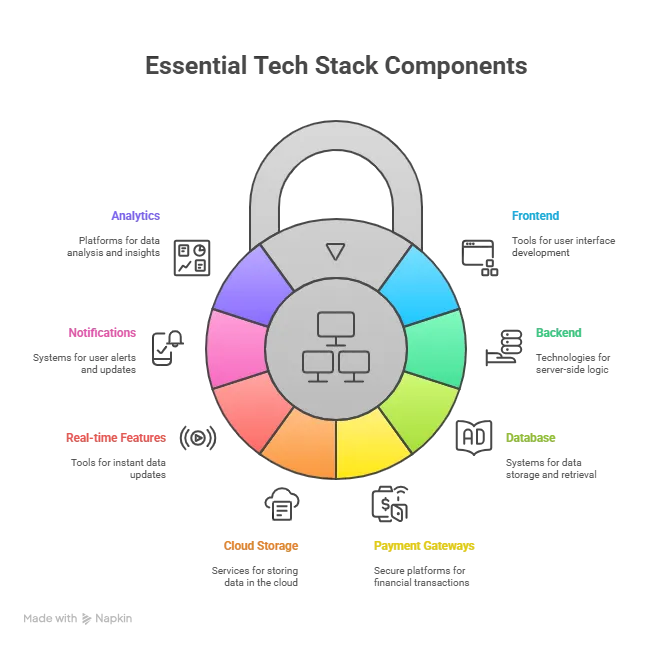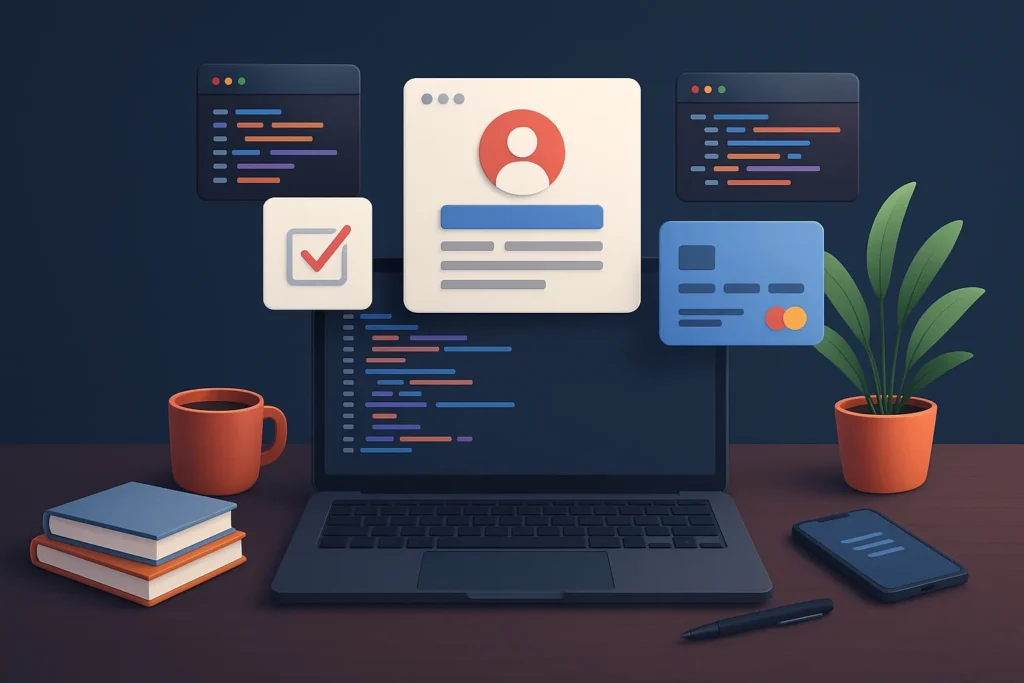Let’s be honest: in 2025, launching an online store isn’t just about listing products and slapping on a “Buy Now” button. With giants like Amazon, Flipkart, and Etsy shaping user expectations, building a successful E-commerce and Online Shopping Platform App means delivering a frictionless, addictive experience—from personalized product recommendations to blazing-fast checkout flows.
Mobile-first shopping has officially taken over. Consumers expect intuitive design, real-time inventory, and payment options that remember them better than their own browser history. So while the opportunity is bigger than ever, so is the margin for error. One clunky screen or delayed load time, and your user is already in someone else’s cart.
But here’s the upside: if you’ve got a defined niche, a compelling offer, or even just the ambition to build your own Flipkart clone, you’re not starting from zero—you’re starting ahead. The key is pairing that vision with a solid development game plan. That’s where Miracuves comes in. With deep expertise in building high-performance, scalable e-commerce apps, we help founders turn great ideas into shopping platforms that don’t just look good—but actually convert.
Why Build an E-commerce App in 2025?
Mobile Commerce Is Dominating
Smartphones have become digital malls. From Gen Z impulse buyers to busy moms grabbing groceries, everyone’s tapping their way through online purchases. If your business doesn’t have a mobile-optimized platform, you’re missing a major piece of the pie.
Personalization Is the New Price War
E-commerce isn’t just about who sells it cheaper anymore. Users want a curated shopping experience—think smart product recommendations, personalized home screens, loyalty points, and timely notifications. A well-designed app can deliver all of this and more.
Platforms Give You More Control
Relying solely on marketplaces like Amazon or Etsy? You’re building someone else’s business. An independent app means full control over branding, pricing, promotions, data, and customer experience. That’s how you grow sustainably.
Read More : Complete Guide to Starting an E-commerce App Business
Must-Have Features for a High-Converting Shopping App

Seamless User Onboarding
From the first tap, the experience should feel effortless. Quick login with email, social media, or OTP. Clean design. Fast loading. No unnecessary friction.
Robust Product Discovery
Users need multiple ways to explore your catalog:
- Category navigation
- Advanced search with filters (price, rating, brand, size)
- Smart recommendations (based on past behavior or similar users)
- Trending, new arrivals, or limited-time deals sections
Product Pages That Convert
Great product pages have:
- High-quality images (zoomable, swipeable, multiple angles)
- Concise but compelling descriptions
- Reviews and ratings
- Size charts, color swatches, availability
- Add to Wishlist or Compare options
Cart & Checkout That Doesn’t Scare People Off
Over 60% of mobile shoppers abandon carts due to complex or slow checkouts. Keep it tight:
- One-click checkout for returning users
- Guest checkout option
- Multiple payment methods (credit/debit cards, wallets, BNPL)
- Real-time price breakdown (with shipping and tax)
- Promo code field upfront
Push Notifications (Done Right)
Re-engage users with:
- Abandoned cart nudges
- Back-in-stock alerts
- Flash sales
- Order tracking updates
But don’t overdo it—smart segmentation is key.
Order Tracking & Returns
Post-purchase is just as important. Let users track shipments in real-time and initiate returns with a few taps. This builds trust and retention.
Read More : – What is Foodpanda App and How Does It Work?
Admin & Vendor Side Features
For business owners or multi-seller platforms, you’ll need:
- Product inventory management
- Bulk upload options (CSV or via API)
- Commission and payout dashboards (for marketplaces)
- Analytics on sales, views, and revenue
- Customer support tickets or live chat backend
Tech Stack: What’s Behind the Magic

| Layer | Tools & Technologies |
| Frontend | Flutter, React Native |
| Backend | Node.js, Laravel |
| Database | MongoDB, MySQL |
| Payment Gateways | Stripe, Razorpay, PayPal |
| Cloud Storage | AWS S3, Google Cloud |
| Real-time Features | Firebase, Pusher |
| Notifications | OneSignal, Firebase Cloud Messaging |
| Analytics | Google Analytics, Mixpanel, Amplitude |
Scalability, load balancing, and data security (PCI-DSS compliance) are non-negotiables when handling payment and customer data.
Read more :- What is Dunzo App and How Does It Work?
Custom vs Clone: Why Reinvent the Shopping Cart?
You could spend 12 months and six figures building from scratch—or you could launch faster with a high-performance, customizable clone solution.
At Miracuves, we specialize in clone app development that gives you the best of both worlds: a proven foundation plus the freedom to adapt, design, and differentiate. Whether you want a Shopify-like platform, a single-brand store, or a multi-vendor marketplace, we’ve got the infrastructure and experience to bring it to life.
Mistakes That Could Derail Your App
Skimping on Search
If users can’t find what they’re looking for within 10 seconds, they’re gone. Invest in robust search functionality with real-time suggestions and intelligent filters.
Ignoring Mobile Optimization
Your app has to look and feel native on all screen sizes. Performance lag, bad formatting, or heavy graphics will hurt conversions.
No Post-Purchase Follow-Up
Don’t ghost your users after the sale. A smooth delivery and easy return process often mean more repeat business than the product itself.
Read more :- What is Blinkit App and How Does It Work?
Emerging Trends in E-commerce App Development
- Voice Commerce: More shoppers are using voice commands to search and order.
- Augmented Reality Previews: Try-before-you-buy using AR for fashion and furniture.
- Live Commerce & Video Demos: Integrating live product showcases or influencer-driven sales.
- Buy Now, Pay Later (BNPL): Flexible financing options are increasingly expected.
Source: Statista – Mobile Retail E-commerce Revenue Trends
Read More : How to Market an E-commerce Marketplace App Successfully After Launch
Conclusion
Building an e-commerce app is more than a tech project—it’s about creating a shopping experience that feels intuitive, enjoyable, and trustworthy. Whether you’re launching a niche store, a large-scale marketplace, or a direct-to-consumer brand, the right platform can be the difference between abandoned carts and loyal customers.
At Miracuves, we help innovators launch high-performance app clones that are fast, scalable, and monetization-ready. Ready to turn your idea into reality? Let’s build together.
FAQs
Still have questions about launching your own e-commerce app? Let’s clear them up.
How much does it cost to build an e-commerce app?
Clone-based solutions can cost between $8,000 and $25,000. Custom platforms can go beyond $50,000 depending on features.
Which platform is best for launching first—iOS or Android?
Start with Android if you’re targeting emerging markets. For North America and high-income users, prioritize iOS. Ideally, launch on both using a cross-platform framework.
Can I run a multi-vendor store like Amazon?
Absolutely. Miracuves offers clone solutions that support multiple sellers, commission management, and individual seller dashboards.
How can I make my app stand out?
Focus on niche targeting, exceptional UX, personalized shopping flows, and loyalty programs. Your value proposition matters more than your product count.
Is it necessary to build a separate admin panel?
Yes. Admin dashboards are essential for managing users, orders, products, marketing campaigns, and support requests.
How long does development take?
With a clone base, you can be live in as little as 4–6 weeks. Fully custom builds usually take 3–6 months.







